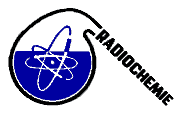Speaker
Ms
Catarina Galinha
(CERENA-IST, Technical University of Lisbon)
Description
An extensive investigation of elemental levels in cereals and their cultivation soils is being carried out across the main production areas of mainland Portugal, with a view to an eventual Se-biofortification of major cultivars (under research contract PTDC/QUI/65618/2006; FCT-MCTES, Portugal). Breads and cereal derivatives (breakfast blends, pastas, etc) make up a sizeable share of the Portuguese diets, thus an increase in the bioavailability of essential elements through crop biofortification may contribute to an upgrade in the health status of the whole population. For this purpose of nutrient supplementation, and accounting for its relative weight in the realm of cereal consumption, samples from two areas with an intensive wheat production (bread and durum; Triticum aestivum L. and Triticum durum L., respectively) were collected through the summer of 2009. Such areas are located north and south of the Tagus river, deep into the inner territory of mainland Portugal. This work aims at an elemental characterisation of the cereal-cultivation soils, and their role in the nutritional uptake of wheat plants. Four certified reference materials were used for the quality control of the analytical technique here (instrumental neutron activation analysis = INAA): NIST-SRM 1567a (Wheat Flour), NIST-SRM 1568a (Rice Flour), GBW07404 (NRCCRM Soil NCS DC 73322) and GBW07406 (NRCCRM Soil NCS DC 73324). For NIST-SRMs, only a few elements were above detection limit in the present conditions - As, Br, K, Na, Rb, Se, Zn - even if in good agreement with their certified values, accounting for uncertainties. The elements that could be compared with certified values for the Chinese soils were: As, Br, Ce, Co, Cr, Cs, Cu, Eu, Fe, Ga, Hf, Ho, K, La, Lu, Na, Nd, Pr, Rb, Sb, Sc, Sm, Ta, Tb, Th, W, Yb, Zn and Zr. Overall, a good agreement was found as well. Wheat-cultivation soils from the area south of Tagus river contain higher concentrations of As, Cs, Ga, K, Rb, Ta, Th, U, W and Zn, thus featuring adequate levels of nutrients such as Cs, K, Rb or Zn. The northern-area soils contain higher concentrations of Co, Cr, Eu, Fe, Hf, Na, Sb, Sc, Tb, Yb and Zr, and feature large amounts of the nutrients Co, Cr, Fe and Na. Similar results were obtained for Br and the rare earths Ce, Ho, La, Nd and Sm. Some differentiation of rare-earth elements occur for Eu, Tb and Yb, i.e., for the heavier ones. No depletion or enrichment was found for Ce, since its ratio to La is 2. For wheat roots, Cd and Hg were found in some samples at levels of 1 and 0.1 mg per kg dry weight (d.w.), respectively. The highest soil-plant transfer coefficients (root d.w. contents/soil d.w. contents) were found for Br, Cr and Zn (above 30 %), followed by As, Co, Ga, K, Tb, U and W (between 10 and 20 %), whereas the lowest values (below 10 %) were found for Ce, Cs, Eu, Fe, Hf, Ho, La, Na, Nd, Rb, Sc, Sm, Ta, Th, Yb and Zr.
Primary authors
Prof.
Adriano Pacheco
(CERENA-IST, Technical University of Lisbon)
Ms
Catarina Galinha
(CERENA-IST, Technical University of Lisbon)
Dr
Maria do Carmo Freitas
(URSN-ITN, Technological and Nuclear Institute)

